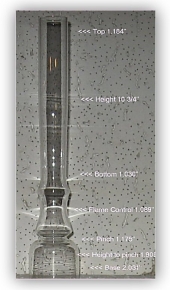
 4
4




 3
3




 6
6




 3
3




Building regenerative Christian villages @ https://jesusvillage.org/
100+ Homesteading Software Tools @ https://homestead.tools/
 2
2




Building regenerative Christian villages @ https://jesusvillage.org/
100+ Homesteading Software Tools @ https://homestead.tools/
 2
2




“It’s said war—war never changes. Men do, through the roads they walk. And this road—has reached its end.”
 2
2




 2
2




Building regenerative Christian villages @ https://jesusvillage.org/
100+ Homesteading Software Tools @ https://homestead.tools/
 5
5




Country oriented nerd with primary interests in alternate energy in particular solar. Dabble in gardening, trees, cob, soil building and a host of others.






 1
1




T Simpson wrote:I've mentioned using Tesla valves in the system to slow exhaust in another post but the consensus was that may restrict air pressure too much; to my knowledge, nobody has actually tried it yet.
Maybe I'll give it a go, I'll be visiting Wheaton Labs this October.
Country oriented nerd with primary interests in alternate energy in particular solar. Dabble in gardening, trees, cob, soil building and a host of others.
 1
1




C. Letellier wrote:
How is a Tesla valve going to add value?? If you slow the gas down you limit pipe length which reduces surface area which reduces the amount of mass that can be heated.
Building regenerative Christian villages @ https://jesusvillage.org/
100+ Homesteading Software Tools @ https://homestead.tools/
 2
2




C. Letellier wrote:Actually time is taken into account 2 ways. The thermal mass acts as a battery giving the heat long term to the home. Height of the heat riser generating a sufficient burn time. And it isn't really an oxygen rich flame. The physical structure acts to limit it to just barely oxygen rich flame. Look at the NOx data. On oxygen rich flame generates lots of NOx. A RMH running properly produces very little.




Phil Stevens wrote:We are using all three Ts, but the time part is served by the mass. Hot, fast, clean combustion with some means of storing that short-term burst of heat energy in a form that is useful to the space and inhabitants over a longer timeframe.




Jordan Holland wrote:I think the issue with what you are describing is that when a given amount of wood is heated to the proper temperature for combustion, it becomes a gas at a certain rate. Air must be fed to the fire at a certain rate to keep up with the off-gassing of the wood for clean combustion. The only practical way to keep the mixture correct and draw out the time of burn for a given amount of fuel I can think of is to use the smallest core possible.







 1
1










 5
5




Justin Hadden wrote:
C. Letellier wrote:Actually time is taken into account 2 ways. The thermal mass acts as a battery giving the heat long term to the home. Height of the heat riser generating a sufficient burn time. And it isn't really an oxygen rich flame. The physical structure acts to limit it to just barely oxygen rich flame. Look at the NOx data. On oxygen rich flame generates lots of NOx. A RMH running properly produces very little.
You can't make the thermal mass the T for time. We're talking about combustion only. The thermal mass has nothing to do with the combustion process, only the heat storage process. Granted the heat riser does add time, but it also adds height and takes up space in the home. The thing i was trying to get to was something that could be used by people that can't have an rmh in their home. If you cant have a big thermal mass in your home, than the only other option is slow the burn even more so that it can have more time to radiate into the room before exiting the flue.
By design an rocket uses wide open air, obviously you can't choke this off to try and slow it down otherwise we end up with a smoky and dirty burn. What about somehow controlling the fuel supply? Just as a diesel engine has wide open air at all times by design, it controls its fuel quantity instead to throttle things. What if somehow we could expose less fuel to our wide open air in order to have a slower yet still complete burn, by not throttling our air we would always have ample supply to complete combustion, no idea how it would be done, just thinking out loud.
Country oriented nerd with primary interests in alternate energy in particular solar. Dabble in gardening, trees, cob, soil building and a host of others.
 4
4




Where there is Liberty, there is Christ!

|
Alas, poor Yorick, he knew this tiny ad:
The new kickstarter is now live!
https://www.kickstarter.com/projects/paulwheaton/garden-cards
|






